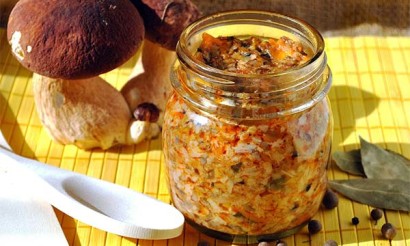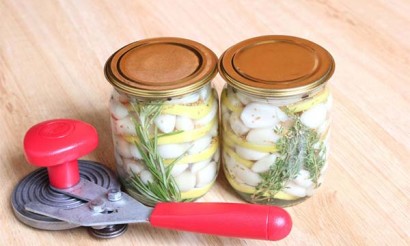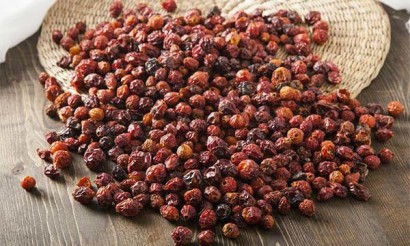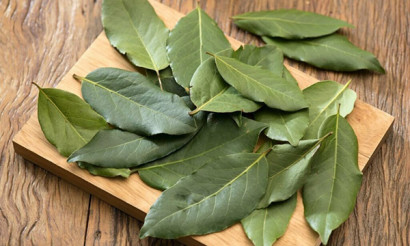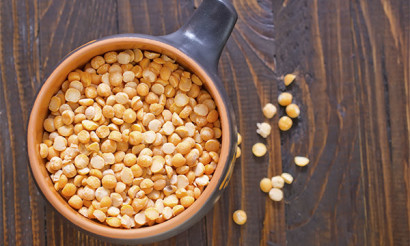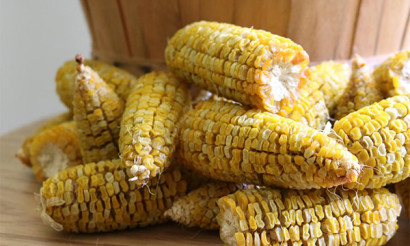How to Dry Basil at Home
Spicy and fragrant herbs add sophisticated flavors to many familiar dishes. However, it is not always possible to decorate a dish with fresh and juicy herbs. Basil has a rich flavor and bright aroma that is not lost even in the preparation for the winter. This plant is widely used in the Mediterranean and Eastern cuisine, and also transforms the usual diet. So it's worth figuring out how to properly prepare and use the seasoning to fill your favorite dishes with unique flavors.
- What varieties of basil are suitable for drying
- How to prepare herbs for drying
- How to properly dry basil
- In the oven
- In an electric dryer
- In a microwave oven
- In the sun
- On the fresh air
- In the fridge
- How to check if it is ready
- How to Store Dried Basil
- What is dried basil good for?
- Where to Use Dried Basil
- Recipes with dried basil
- Tomato Soup
- Caprese
- Basil hummus
- Bruschetta with basil, tomatoes and garlic
- Green basil pesto
- Tea with basil
What basil varieties are good for drying?
You can use absolutely any variety for drying, depending on your tastes and personal preferences. Every variety has its own flavor profiles: lemon, pepper, clove, anise, and even vanilla. You can even experiment and make different varieties. Basil with the aroma of cloves and lemon is a great addition to meat dishes. A spice with anise flavor goes well with fish and vegetables.
Among the variety of varieties for drying preference is still given to purple plants. It is in the dark leaves contain a higher concentration of aromatic oils, which retain the characteristic sharp smell of seasoning.
There are three most striking varieties among the purple varieties:
- Yerevan - the most popular purple basil variety, which has a tart flavor of tea and fragrant pepper. Excellent addition to soups, salads, meat and fish dishes, as well as sauces. Up to three harvests can be obtained from a shrub in one season.
- Dark Opal is a purple-red American variety popular for its peppery and rich clovey spicy flavor. Dried leaves are often added to spice mixes, flavored oils and balsamic vinegars.
- Tulasi is a sacred Indian basil that has a pungent, clove-like aroma and a peppery, bitter flavor. It best brings out the flavor of game, so it is used to make marinades.
How to prepare herbs for drying
Depending on the variety, basil can be grown in the open ground, in the greenhouse or even on the windowsill. Therefore, everyone can stock up on the spice for winter, even without a garden plot.
Basil is best harvested at the beginning of flowering. You can cut both leaves and flowers. For the bush to give a repeated harvest, it is important to keep the height of the stems about 15 cm, with 4 pairs of leaves.
The harvest is mainly cut in the morning, when the sun has already had time to dry out the leaves a bit. To get the richest and most flavorful spice, it is recommended to harvest throughout the warm season. After all, it is the delicate thin leaves that contain the greatest concentration of trace elements and aromatic oils.
The double harvest is more suitable for basil in the open air. The first harvest is from the second half of July to August, when the plant has reached its maximum growth. The leaves are cut off along with the shoots so that the bush will later branch out and produce a second, richer harvest. The first harvest is most often used fresh, added to seasonal salads of fresh vegetables. You can also dry the desired amount of herbs. After cutting the leaves and flowers, water the plant liberally to give it enough water for recovery and growth.
Secondary picking is done in late September, when the lush greenery has already grown, but the flowers have not yet bloomed. It is important to have time to cut the leaves before flowering, otherwise the taste of the leaves will reek of bitterness. The repeated harvest is most often used for freezing and drying.
How to dry basil properly
When simply drying basil, like other plants, it loses up to 80% moisture. Along with it the aromatic oils evaporate, so the dried leaves can take on a hay smell. To avoid such results, it is important to follow all stages of preparation.
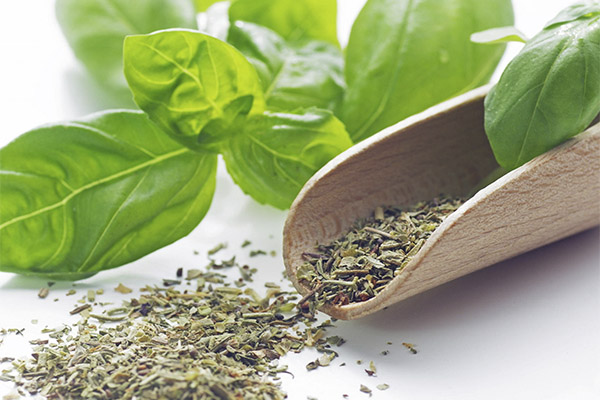
There are several ways to dry plants, which can be done without special devices, at home. And they allow you to preserve the maximum possible concentration of useful, tasty and fragrant components of the spice.
In the oven
- Before drying, it is important to properly prepare the raw material. The greens are washed with cool clean water and dried on paper towels. The porous structure of disposable towels will well absorb the excess moisture flowing off the leaves. If there is a lot of water, replace the wet towels with new dry ones, repeating the procedure if necessary.
- Leave the leaves spread out for 1-2 hours, then move on to the drying process itself.
- Preheat the oven to a steady 90-100 degrees.
- Layer parchment paper on baking trays, put dried basil leaves on top, loosely to each other.
- In the preheated oven we send 1-2 trays, with the door of the oven should remain ajar. Dry the leaves this way for 1.5-2 hours. During this time the room is filled with fragrant aroma of spices.
During the drying time the weight of leaves decreases markedly, while retaining a rich flavor and aroma.
In an electric dryer
When it is necessary to prepare a lot of spices and dry some fruits and berries, an electric dryer comes to the aid of the hostess. With the help of a special device, you can make preparations, preserving the maximum of useful components.
- Basil leaves are washed in clean, cool water and shaken in a large sieve to remove excess water. For this method, it is better to use only the leaves.
- Place the raw material in a thin layer on the trays, not densely, and put them on the heating pad.
- To preserve the spice in itself the maximum number of useful components, we set the temperature at 35 degrees and keep one tray for no more than 1 hour. At this temperature level in 1 hour the leaves will not have time to completely dry, so you need to heat the trays alternately until fully ready.
Depending on the type of electric dryer, the temperature and drying time may vary. In order to prepare a high-quality seasoning, you should always pay attention to the recommendations of the manufacturer of this or that appliance.
In the microwave
Before drying in the microwave, wash the leaves in clean cold water, spread them out on clean towels and let them dry naturally for 2 hours. Then spread the leaves out on a plate in a thin layer and put them in the microwave.
For drying in the microwave, a few minutes at medium power is enough. During this time, the excess moisture has time to evaporate, but the leaves are not dried out and retain their properties and flavor. Leave the dried leaves to cool for an hour.
Prepared seasoning is usually crushed and poured into a jar with a tight-fitting lid.
In the sun
You can also dry basil for the winter in a simple natural way, without the use of special electric devices.
- Leaves are washed with cold clean water and spread out on disposable paper towels. At the same time we change the towels as they get wet, so that in the process of drying no mold is formed.
- When the excess moisture has been absorbed by the towels and has evaporated naturally, we move on to the drying process.
- Spread the raw material on trays covered with waffle towels. Cover the top with a thin gauze in 1-2 layers, so that as it dries, dust does not accumulate on the leaves, and they are not carried away by the wind.
To dry basil in the sun, it is important to choose the right place - a warm, dry, ventilated covered space. This can be a sheltered area, a porch, or a balcony.
In this way, the leaves are dried for several days.
Outdoors
The method of hanging and drying "bundle" is familiar to every avid gardener. With this simple and accessible method does not require special equipment, as well as special training.
This method is suitable for double harvesting, when it is possible to cut whole branches. For regular leaf harvesting, it is better to use other methods of drying.
- The cut twigs are washed, shake off excess moisture and leave on a towel for a couple of hours to evaporate excess water. Then form the branches into small bundles and tie them with a rubber band, a ribbon or even a thick thread.
- For drying, choose a well-ventilated, but closed place, as the bundles will not be protected from rain and dust. The best place is under a roof in a cottage or covered veranda.
- Hang the bundles upside down so that they do not touch each other. Leave the piece for 1-2 weeks until it is completely dry.
Dried basil can be crushed and stored in an airtight glass container.
In the refrigerator.
Basil leaves can also be dried in the refrigerator while retaining color and flavor. Rinsed and dried raw material spread out on the shelves of the refrigerator, covered with waffle or paper towels. At the same time in the fridge for the period of drying there should not be any products that would spoil the flavor of the spice. With this method, the leaves within 1-1.5 weeks lose moisture and completely dry out.
How to check readiness
In order to keep the spice and not spoil throughout the winter, it is important to dry the basil until it is completely ready. As a rule, dried stems do not bend, but break immediately. The finished basil leaves are very brittle, so they grind into powder with your fingers. If the branches and leaves are flexible, then the plant needs to be given more time before it dries completely.
How to properly store dried basil
Whole leaves can be stored in cotton or linen bags in a dark, cool place.
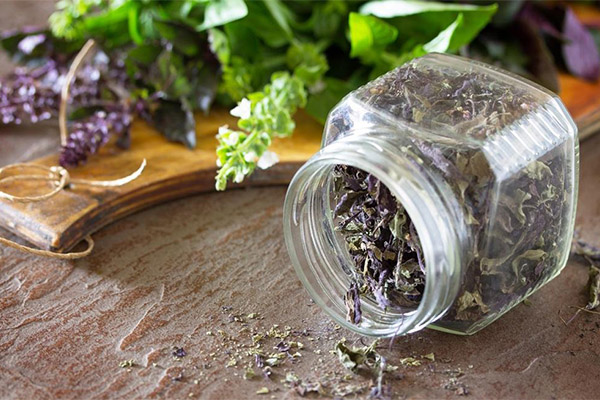
To get a fine spice, only the most fragile parts of the plant - flowers and young leaves - are crushed. Spice powder is stored in sealed glass jars in a dark and cool place, to preserve flavor and aroma. Basil, when crushed, is difficult to distinguish from other seasonings like tarragon, sage or rosemary, so you should always label or tie a label with the name.
The tougher parts of basil-the stems and sprigs-can be kept and used to make teas, infusions, or spirit tinctures. Store the stems better in a glass jar or canvas bag.
How dried basil is useful
Dried basil, prepared according to all the rules, has the same useful composition as the fresh plant. Regardless of the color, the prepared seasoning retains the same composition:
- vitamins: A, C, E, K and others;
- trace elements: manganese, iron, zinc, copper and selenium;
- tannins;
- phytoncides;
- essential oils;
- saponins and glycosides;
- sugars.
Not all aromatic spices can boast such a rich useful composition. Therefore, women, who intentionally limit their diet, are recommended to use dried basil as a useful mineral supplement to dietary dishes. Fresh or dried basil not only supplements the diet with the necessary substances for the body, but also removes harmful toxins.
Infusions and decoctions in their own form, as well as in collections, are used for medicinal purposes. The plant has antiseptic and anti-inflammatory properties. Properly prepared infusions, decoctions and tinctures are used to relieve toothaches, improve gastrointestinal function, relieve inflammation of mucous membranes.
Where dried basil is used
The most common use of dried basil is, of course, cooking. It's hard to imagine how many hundreds or even thousands of different dishes can be prepared with this spice.
Dried basil is used to give a special flavor to salads, soups, side dishes, meat and fish dishes. It is also used in sauces and dressings. It is even used to brew spice tea.
Bright spice also combines well with other spicy herbs: garlic, sage, rosemary, tarragon. Such rich spice mixes will open up best in combination with game.
Basil is very popular in medicine and cosmetology. Many skincare products containing basil have antioxidant properties that improve the condition of aging skin. In folk medicine, you can find infusions that help prevent the appearance of new wrinkles. More concentrated preparations with the spice are used to get rid of warts and other imperfections on the skin.
Basil in any form should be present in the diet of women who suffer from regular menstrual pain. The high iron content in the leaves of the plant helps to replenish the balance of trace elements during active blood loss.
Decoctions based on basil reduce the pain of cystitis. Even a weak decoction, when taken regularly, relieves inflammation and helps to stop the pain.
Also, basil is important for men's health. The useful composition has a positive effect on potency and sexual desire. To get this effect, it is important to include the spice in your regular diet.
The components in basil help protect the gums from inflammation and strengthen tooth enamel.
Fragrant tea with the addition of the herb normalizes the nervous system during times of frequent stress and anxiety. The relaxing and calming effect of spice tea helps to take the difficulties of life more easily.
Light decoction of basil when taken as a course cleanses the body of toxins and eliminates problems of the gastrointestinal tract.
Lotions prepared on the basis of the spicy herb promote healing of wounds and abrasions.
Applying basil for medicinal purposes, it is also important to remember about the dosage and contraindications. Before using such remedies, be sure to consult with your doctor.
According to beliefs, dried basil has special magical properties: it attracts good luck, prosperity and love. Since ancient times, this plant has been thought to maintain a peaceful environment in the home and protect all family members from ill-wishers.
Recipes with dried basil
The flavor and aromatic properties of basil are quite distinctive and vivid, so most dishes are only supplemented with a small amount of the spice. However, there are a number of delicious dishes in which basil is an essential ingredient.
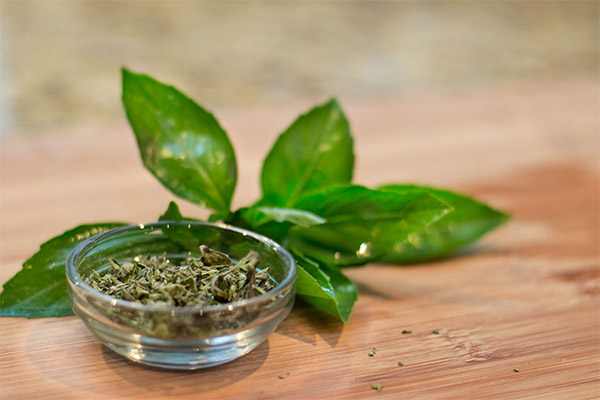
Tomato Soup
All traditional Italian recipes are not without the classic combination of basil and tomatoes. A light and tangy Mediterranean soup will diversify the usual diet.
To prepare it you will need:
- red onion - 1 pc;
- garlic - 3 cloves;
- tomatoes in their own juice - 800 gr;
- Basil - 2 fresh bundles or 2 tablespoons of dried spice;
- broth or water - 0.5 l;
- olive oil - 2 tablespoons;
- 20% cream - 200 ml;
- brynza - 70 gr;
- Italian herb mix - 2 tbsp;
- salt and pepper - to taste.
Step by step recipe:
- Fry the finely chopped onion in a pan with olive oil for 3 minutes. Add the grated garlic, stir and fry for another 3 minutes.
- Peel the tomatoes from the skin and turn them into a pulp with a blender.
- Combine the tomato pulp and baked potatoes, add broth. Mix everything and bring to the boil. For 10 minutes simmer the mixture on medium heat.
- Add cream and basil. If the basil is fresh, chop it beforehand. Pour the Italian seasoning into the soup, add salt and pepper. Thoroughly stir and cook over low heat for 10 minutes.
The dish is ready. Before serving we add diced brynza and croutons to the plate with the soup.
Caprese
This popular Mediterranean dish is a light and harmonious combination of ingredients. The ready dish will decorate the holiday table and will be a great accompaniment to red wine.
To prepare the dish you will need:
- tomatoes - 3 pcs;
- mozzarella - 200 gr;
- basil - 2 hours;
- balsamic vinegar - 1 tbsp;
- olive oil - 2 tablespoons;
- salt and pepper - to taste.
Step-by-step preparation:
- Slice tomatoes into medium-thick circles, lay them out nicely on a dish.
- Cheese cut into slices of the same thickness, and put on the tomatoes.
- Sprinkle basil and other spices on top, pour oil and vinegar.
The dish is ready. You can also decorate the snack with flax seeds and sesame seeds, if you like.
Basil hummus
Among the recipes based on basil, it is impossible to miss a nutritious vegan dish - hummus. The bright and pungent flavor of basil harmoniously sets off the delicate chickpea cream. And sweet tomato paste and searing tabasco add spice to the dish.
To prepare the dish you will need:
- chickpeas - 100 grams;
- dried basil - 2 tablespoons;
- pine nuts - 2 tablespoons;
- olive oil - 2 tablespoons;
- lemon juice - 1 tsp;
- salt - 1 tsp;
- Tabasco sauce - 3 drops;
- tomato paste - 1 tbsp.
Step-by-step recipe:
- Soak chickpeas for 12 hours. Drain the water, pour in fresh water so that it is just above the peas. Boil on medium heat until tender.
- Chop the boiled chickpeas, basil and pine nuts with a blender.
- Add the olive oil and lemon juice and whisk in the blender.
- Pour the tomato paste into the mixture, add the spices and Tabasco sauce. Thoroughly mix. The hummus is ready.
Bruschetta with basil, tomatoes and garlic.
This is a traditional Italian appetizer with a terrific combination of flavors.
To prepare it you will need:
- baguette - 1 pc;
- olive oil - 2 tablespoons;
- Balsamic vinegar - 0.5 tbsp;
- feta cheese or fetaksa - 50 gr;
- cherry tomatoes - 5 units;
- Basil - 1 bunch fresh or 1 tsp. dried herbs.
Step by step recipe:
- Baguette cut into thin slices, grease with olive oil and lightly fry.
- Similarly, cut the cheese and put it on top of the baguette slices.
- Cut the tomatoes into cubes, mix with spices and balsamic vinegar and fry in a pan with olive oil.
- Put our grilled cheese on the grilled cheese.
The dish is ready. Bruschetta can be served with fresh basil leaves.
Green Basil Pesto
This is a light summer spicy sauce based on basil, which perfectly complements pasta.
To prepare it, you need to take:
- fresh basil - 2 bundles (or 2 tablespoons of dried spice);
- garlic - 3 cloves
- parmesan - 50 gr;
- pine nuts - 30 gr;
- olive oil - 3 tbsp;
- lemon juice - 1 tsp;
- salt and pepper - to taste.
Step-by-step recipe:
- In a heated dry frying pan, pour the nuts and toast for 2 minutes, stirring constantly.
- Chop the cheese and garlic on a grater.
- Combine the lemon juice, olive oil and basil.
- Combine all ingredients and chop in a blender.
- Add salt and pepper and mix.
Pesto sauce is ready. Store the finished dish in the refrigerator for no more than 5 days.
Tea with basil
Basil can be added to your favorite type of tea, used on its own or as part of a compilation herbal drink.
To make a rich basil tea, you will need:
- hot water - 1 liter;
- dried basil - 2 tbsp.
Preparation:
- Basil pour into the kettle and pour hot water.
- Immediately cover with a lid to preserve the rich flavor and useful properties. To brew enough 5 minutes.
It is important that the water temperature was not higher than 85 degrees, otherwise the tea can be harmful to health. The spice contains many essential oils, which change their properties when exposed to high temperatures.
«Important: All information on this site is provided for informational purposes only For informational purposes only. Before applying any recommendations, consult a health care professional. specialist. Neither the editors nor the authors shall be liable for any possible harm caused by materials."


